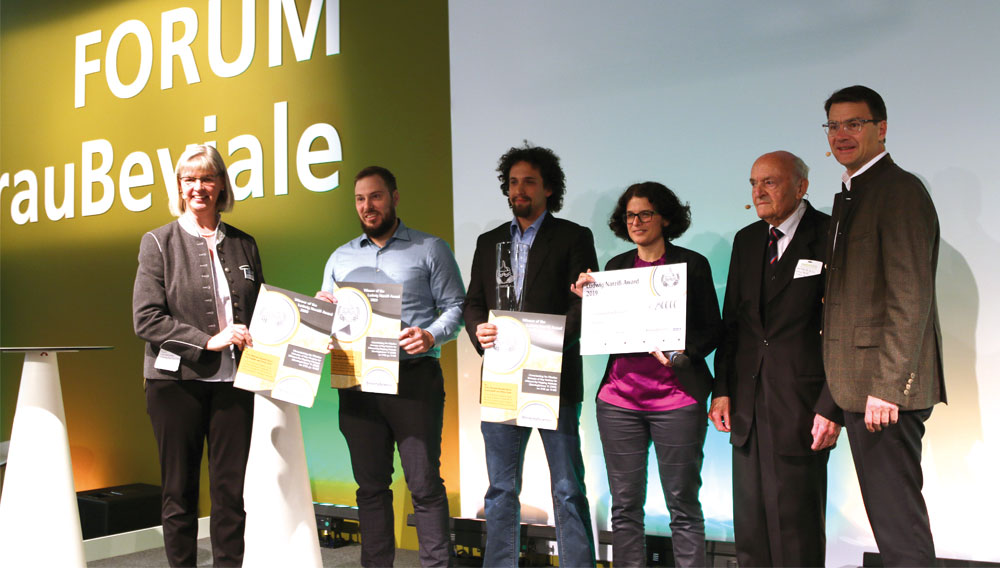Combination of filtration and extraction
Ludwig Narziß Award | The Ludwig Narziß Award for Brewing Science was awarded for the fifth time, again on the occasion of BrauBeviale that took place mid-November 2019 at the Nuremberg Exhibition Centre. The award is designed to honour authors of a scientific publication in BrewingScience whose results have a strong practical relevance.
“The Filtration Behavior of Hop Particles”
This year, the price, which is endowed with EUR 2500, went to Peter Michael Bandelt Riess and Prof. Petra Först from the Chair of Process Systems Engineering of the TUM School of Life Sciences Weihenstephan at Technische Universität München and Jörg Engstle, formerly research associate at the chair, for their article “Characterizing the Filtration Behavior of Hop Particles for Efficient Dry Hopping Methods”.
At the beginning of his laudation, Prof. Ludwig Narziß pointed to the growing importance of the craft beer market and its demand for beers with pronounced taste variety, which is not least achieved through the aroma profile. The aroma profile can be influenced by the last hop additions, mostly in the form of pellets that are introduced into the fermentation or maturation tank. Consequently, the added solid particles have to be removed after aroma extraction. Since the available separation equipment in most breweries is not suitable for this task, a considerable amount of product is often lost in the process. To avoid this, the authors applied cake-forming filtration and optimised operating conditions.
The considerable swelling volume of hop pellets is favorable for aroma extraction. To ensure consistent extraction, low operating pressures (compressibility of the hop filter cake) and temperatures around 5 °C should be applied. At higher temperatures permeability drops significantly. Swelling time is almost finished after two hours; however, aroma extraction time can definitely be set longer (BrewingScience, 9/10, 2018 (71), S. 74-80). Prof. Narziß considers this combination of filtration and extraction a method that is particularly relevant for practice.
During the last five years, scientific papers on hops, yeast and microbiology have been awarded. The list of award winners reads like a “Who is Who” of international brewing science. www.brewingscience.de
Keywords
BrewingScience awards brewing science
Authors
Karl-Ullrich Heyse
Source
BRAUWELT International 2019


